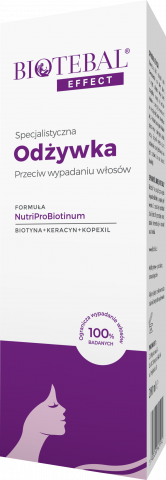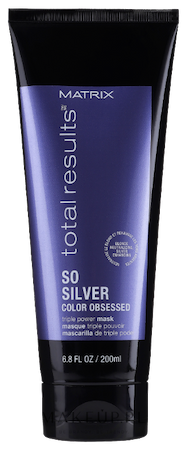Conscious hair care step by step: how to care for your hair
This article is a compendium of hair care knowledge - in a nutshell.


Learn more about our editorial process
.

Learn more about our editorial process
.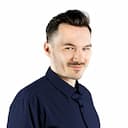

Learn more about our editorial process
.

Learn more about our editorial process
.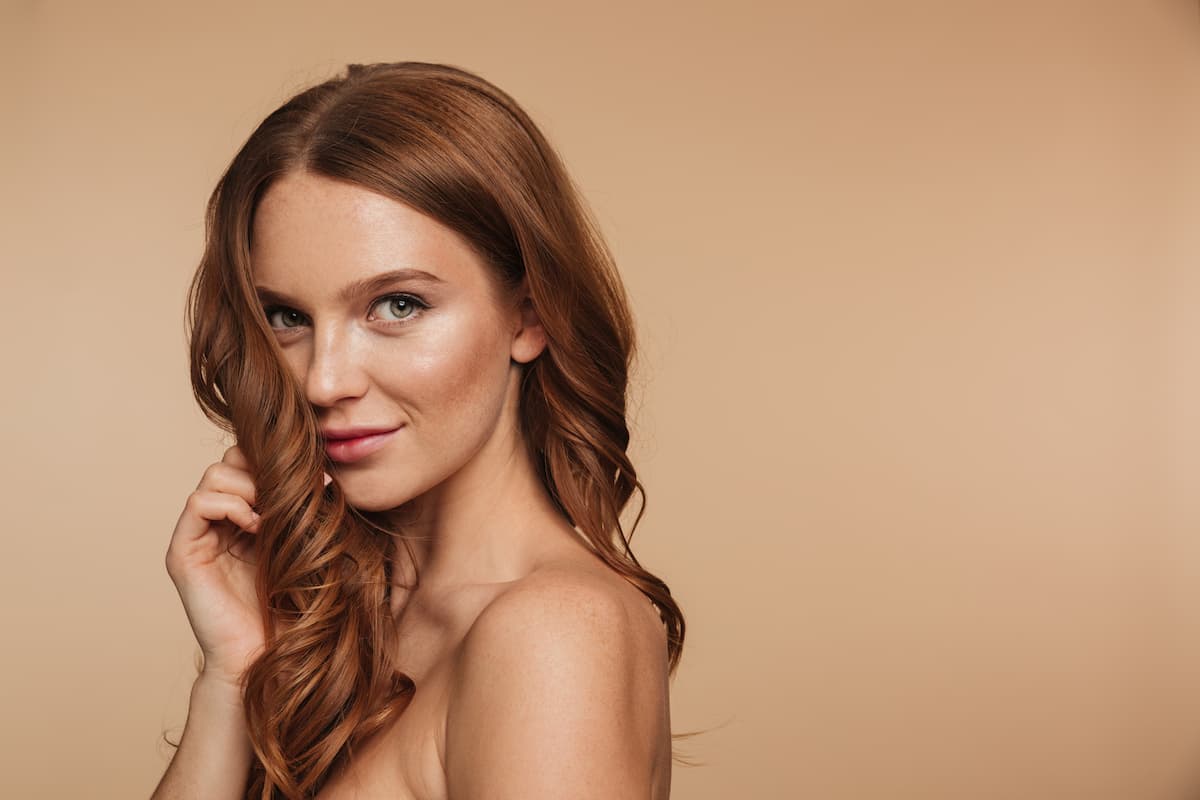
Why you can trust us
Articles on Natu.Care are written based on scientific research, data from government websites and other reliable sources. The texts are written in cooperation with doctors, nutritionists and other health and beauty experts. Articles are reviewed before publication and during significant updates.
.Learn more about our editorial process
.Information about advertisements
Content on Natu.Care may contain links to products from the sale of which we may receive a commission. When creating content, we adhere to high editorial standards and take care to be objective about the products discussed. The presence of affiliate links is not dictated by our partners, and we select the products we review ourselves completely independently.
.Learn more about our terms and Conditions
.You get up in the morning, look in the mirror and think to yourself ey... it's a cap today. I know it. The good news is that you can keep such days to a minimum.
The key to success is proper hair care. By right, I mean what kind of care? Well, the right care for your hair and scalp. And although the density and thickness of your hair is largely a question of genes, it is possible to cheat mother nature a little.
The key to success is the right care.
From this article you will learn:
- How to properly use basic hair care products. .
- What is PEH balance. .
- How emollients, humectants and proteins work. .
- How to care for hair based on its porosity and type. .
- How to deal with the most common problems of the hair and scalp. .
- How to care for hair after hairdressing treatments. .
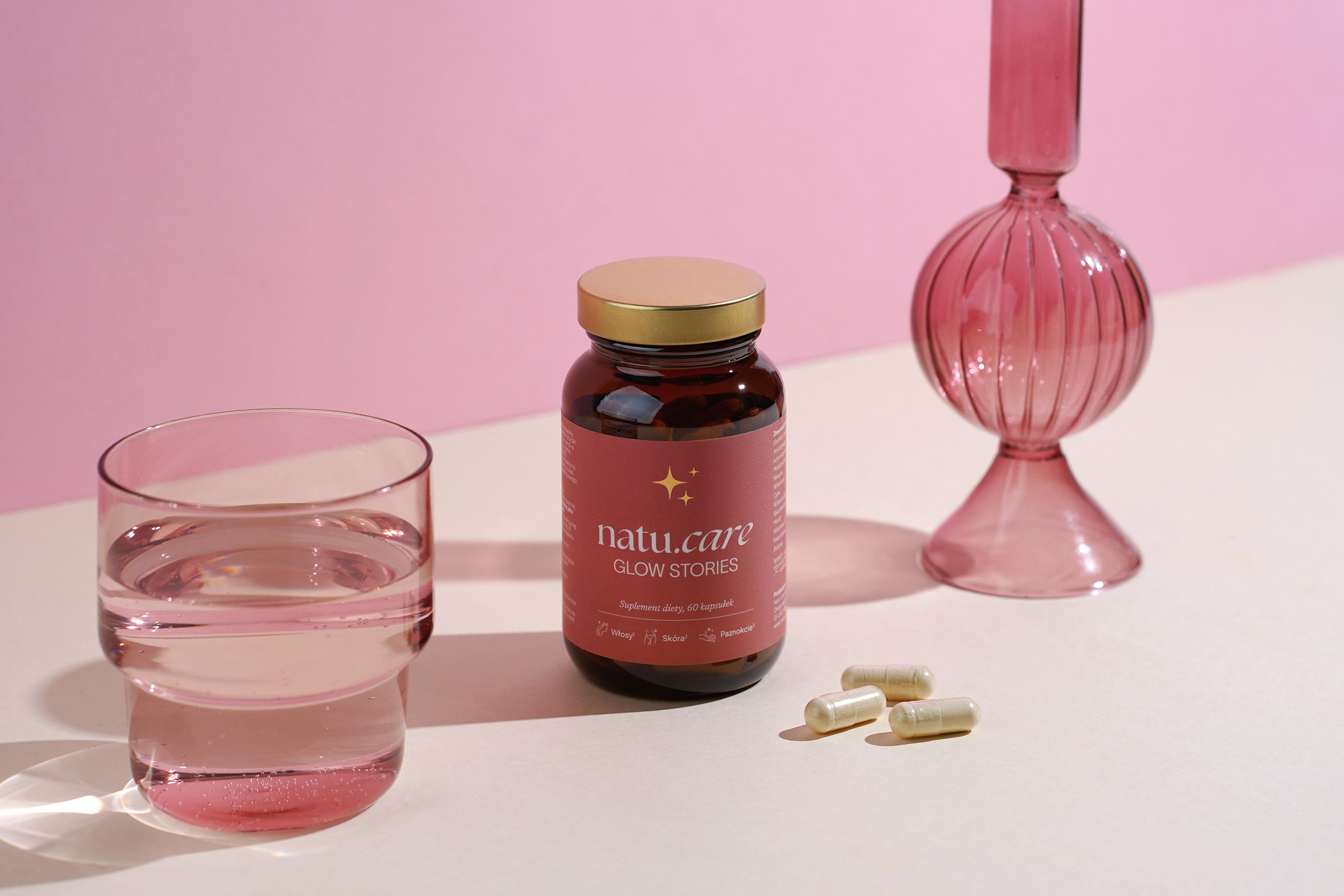
Odkryj, co dla Twojej urody może zrobić Natu.Care Glow Stories -15% z kodem BLOG15
Skóra, włosy, paznokcie: Glow Stories
Wesprzyj prawidłowy stan skóry, włosów i paznokci i ochroń komórki przed stresem oksydacyjnym!
Sprawdź cenę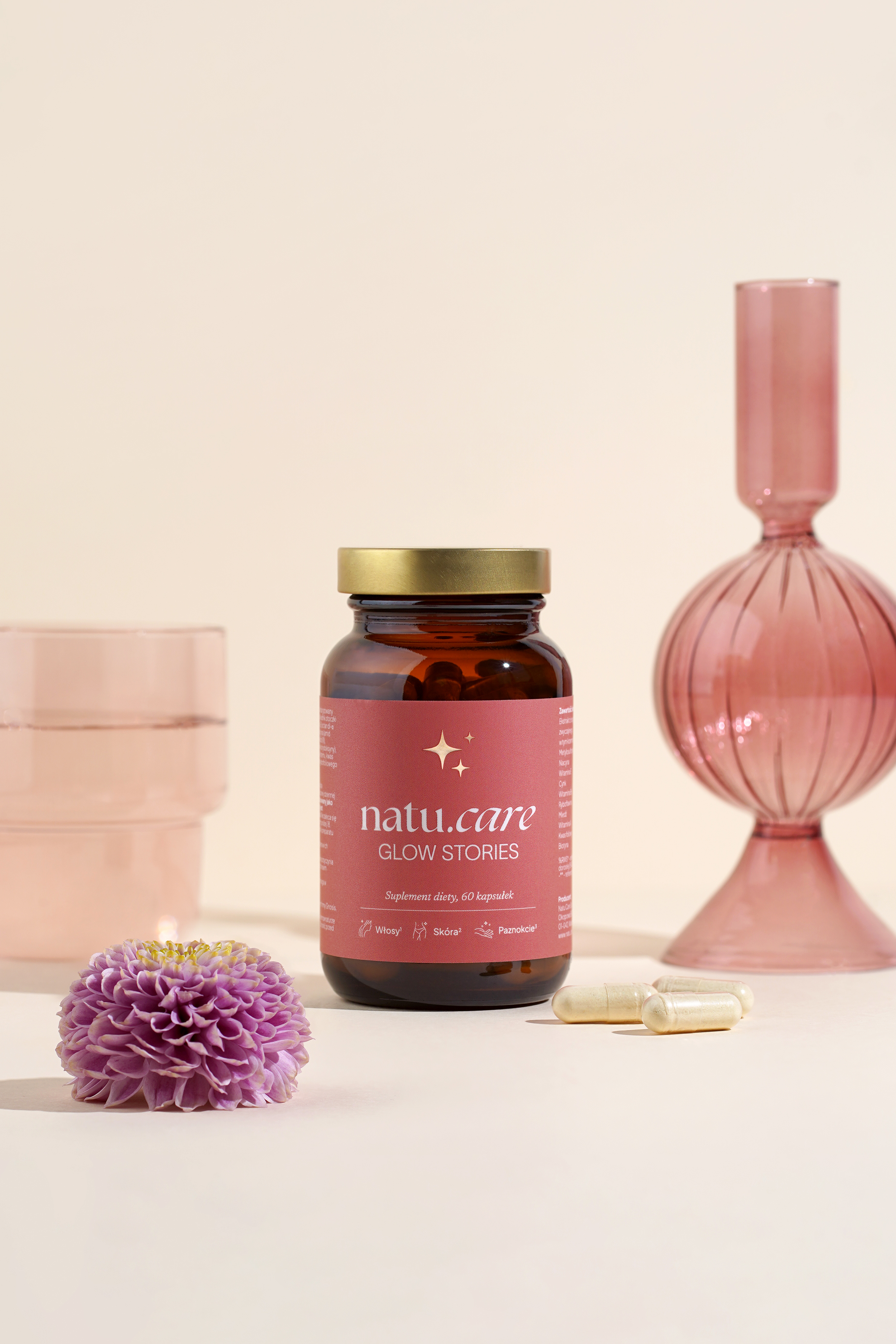
Glow Stories to formuła aktywnych składników, które zostały starannie dobrane wedle najnowszych badań naukowych. Znajdziesz w nich biotynę, cynk i miedź pielęgnujące zdrowie włosów i promiennej cery. Ponadto cynk jest odpowiedzialny także za zachowanie zdrowych paznokci. Mądra suplementacja zadba o Twoje piękno od środka.Julia Skrajda, dietetyk kliniczny
See also:
- Facial care in a nutshell .
- Home hair care
- How to oil your hair
- The causes of excessive hair loss
- Best hair conditioners
- Best vitamins for hair
- Hair loss supplements
- Hair collagen
- Hair loss shampoos
The most important care is that from the inside
.
In a moment, we'll take a look at hair care rituals and treatments that you can apply yourself on a daily basis - at home. First, however, it's worth mentioning a key aspect of caring for the condition of your hair: a healthy and balanced diet.
It is on the plate that caring for hair begins. Provide your body vitamins, minerals and other valuable nutrients by eating vegetables, fruit and low-processed foods. Every ingredient is important - don't forget healthy fats and carbohydrates. Restrictive, debilitating diets can take a toll on the condition of your hair.
In diet, the most important thing is to have an adequate calorie supply and to compensate for deficiencies - if we eat too few calories, our hair can start to fall out, becoming thinner and more fragile. This is because our body considers hair to be the least important product. When threatened or hindered by food (fasting, poorly balanced diets, low calorie diets) it prefers to supply these nutrients to the major organs or muscles..
 .
.
Julia SkrajdaDietitian
.If we want beautiful, strong hair we need to take care of:
.
- adequate supply of protein (including collagen), .
- compensation of deficiencies (especially vitamin B12 and iron),
- a proper supply of silicon and B vitamins, which strengthen hair and take care of its structure and elasticity.
High glycaemic index meals will not be conducive to maintaining hair health. Eating processed, fatty, low-fibre meals or sweets or fast food will increase the frequency and amount of hair loss - adds dietitian.
And if you want to further support your body and make your hair grow stronger, you can reach for hair-supporting dietary supplements.
Collagen Booster - Glow Stories
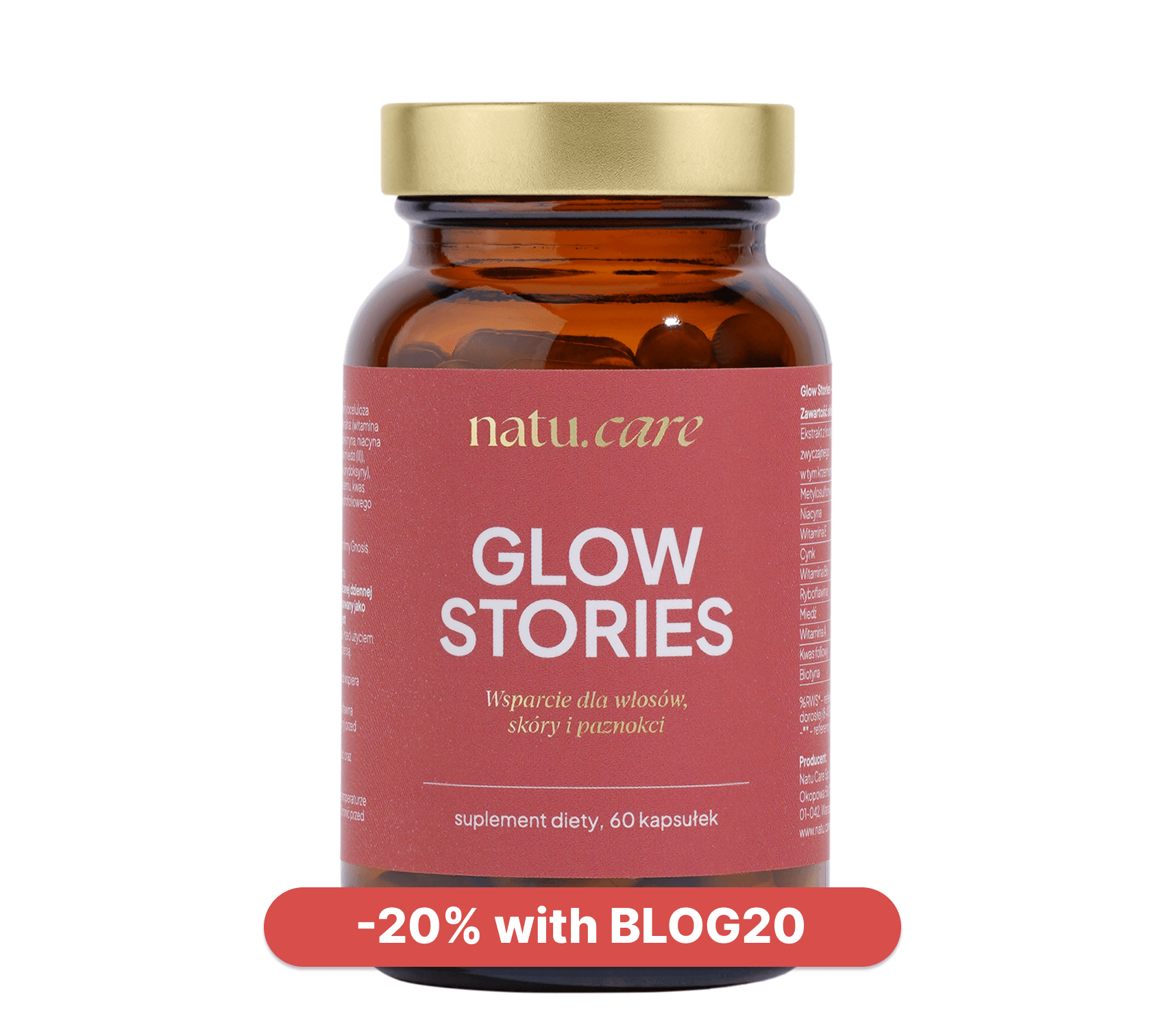
- Active ingredients: bamboo shoot extract, Quatrefolic®, L-Methionine, L-cysteine, vitamin E, vitamin A, niacin (vitamin B3), vitamin B6, vitamin B2 (riboflavin), biotin, zinc, copper
- .
- Form: capsules
- .
- Dose: 1 capsule per day
- .
- Sufficient for: 60 days
- .
Product description
A dietary supplement containing vitamins, minerals and plant extracts thatósupport the skinóhand, hair and nails. The product is especially distinguished by the form of folate – it is Quatrefolic, whichós absorbed very well and is natural.
In addition to valuable vitamins and minerals, such as vitamin A, E, B3, B2 and biotin, the formula contains bamboo shoot extract, whichóry further enhances your beauty.
Pros and cons
A dietary supplement containing vitamins, minerals and plant extracts thatósupport the skinóhand, hair and nails. The product is especially distinguished by the form of folate – it is Quatrefolic, whichós absorbed very well and is natural.
In addition to valuable vitamins and minerals, such as vitamin A, E, B3, B2 and biotin, the formula contains bamboo shoot extract, whichóry further enhances your beauty.
Additional information
A dietary supplement containing vitamins, minerals and plant extracts thatósupport the skinóhand, hair and nails. The product is especially distinguished by the form of folate – it is Quatrefolic, whichós absorbed very well and is natural.
In addition to valuable vitamins and minerals, such as vitamin A, E, B3, B2 and biotin, the formula contains bamboo shoot extract, whichóry further enhances your beauty.
.
Basics, or shampoo and conditioner
.
How do you consciously look after your hair? The basics will always be proper scalp cleansing. Wash your head as often as you need to, diluting your shampoo in the process - it will be gentler on your skin. Also provide your strands with nourishment consisting of three types of substances: emollients, humectants and proteins.
When buying cosmetics hair care, follow the rule: shampoo is for the scalp, conditioner is for the hair. With shampoo only being on your scalp for a short while, there is no chance that the nutrients it contains will work wonders.
.
When choosing a scalp cleanser, the main consideration is that it should not irritate. SLS (Sodium Lauryl Sulfate) and its derivative SLES (Sodium Laureth Sulfate) have recently made headlines on the web.
These two substances are not the same.
Both substances are cleansing agents that remove grease (and therefore sebum) well and foam well. However, they can irritate the scalp if used on a daily basis. Should they therefore be avoided?
Not necessarily. Firstly, your scalp may tolerate them well. Secondly, you can use them every wash, e.g. once a week or when washing out henna or dye. Shampoos containing SLS and SLES are considered to be stronger, and some hair geeks refer to them fondly as rippers.
Tip
.If hard or medium-hard water comes from your tap, try a chelating shampoo. Limescale also builds up on the hair and scalp (in amounts you can't see with the naked eye, of course), making it difficult for the nutrients in your cosmetics to penetrate. A chelating shampoo will gently dissolve the build-up, helping to improve the overall condition of the scalp and your curls. After spreading, keep it on your head for 2-3 minutes.
In addition to choosing the right product, washing technique is also important. Firstly, mix the shampoo with water. Add some water to it and stir vigorously so that it foams. Then pour the foam and the diluted shampoo onto your scalp.
.
Gently but thoroughly spread the product on the scalp and massage for a while. For cleansing the lengths of your hair, the lather alone will usually be enough to run down the lengths of your hair. However, if you want a more thorough wash, don't rub and rub the shampoo into your hair. Simply distribute it through them, gently squeezing the strands.
Primabiotic Microorganic Normalizing Shampoo (250 ml)
Product description
Shampoo for daily use. It has a soothing effect, prevents greasiness and signs of dandruff. It makes the hair soft and gentle. The probiotics contained in the composition take care of the correct pH of the skinóry, and the emollient additionally strengthens the hair.
Pros and cons
Shampoo for daily use. It has a soothing effect, prevents greasiness and signs of dandruff. It makes the hair soft and gentle. The probiotics contained in the composition take care of the correct pH of the skinóry, and the emollient additionally strengthens the hair.
Additional information
Shampoo for daily use. It has a soothing effect, prevents greasiness and signs of dandruff. It makes the hair soft and gentle. The probiotics contained in the composition take care of the correct pH of the skinóry, and the emollient additionally strengthens the hair.
Shampoo for daily use. It has a soothing effect, prevents greasiness and signs of dandruff. It makes the hair soft and gentle. The probiotics contained in the composition take care of the correct pH of the skinóry, and the emollient additionally strengthens the hair.
Conditioners are supposed to improve the appearance of your hair instead. Yes, look -not necessarily condition. This is best taken care of by nourishing your roots from the inside out (with the right nutrition and possibly supplements).
After applying a conditioner, the hair is ready to grow.
After application, keep the conditioner on for at least 10-15 minutes. In fact, the longer, the better. Then the active ingredients it contains will have a chance to penetrate the hair structure. The exceptions to this are emollient conditioners, which literally only need a moment to leave a slippery protective film on the hair.
.
Most conditioners are not suitable for application to the scalp and may further clog it. Unless the manufacturer has clearly written on their product that it is also suitable for the scalp, do not apply it to the roots of your hair, only to the lengths of your hair.
The following is a good idea.
Product description
Specialised conditioner for the care of the skinóscalp and damaged, weakened hairówith a tendency to thinning and falling out. The effectiveness of the conditioner has been confirmed by tests carried out on people with excessively falling hair and with various types of hair – normal, dry, coloured, uncoloured, oily.
.Pros and cons
Specialised conditioner for the care of the skinóscalp and damaged, weakened hairówith a tendency to thinning and falling out. The effectiveness of the conditioner has been confirmed by tests carried out on people with excessively falling hair and with various types of hair – normal, dry, coloured, uncoloured, oily.
.Additional information
Specialised conditioner for the care of the skinóscalp and damaged, weakened hairówith a tendency to thinning and falling out. The effectiveness of the conditioner has been confirmed by tests carried out on people with excessively falling hair and with various types of hair – normal, dry, coloured, uncoloured, oily.
.User review
Specialised conditioner for the care of the skinóscalp and damaged, weakened hairówith a tendency to thinning and falling out. The effectiveness of the conditioner has been confirmed by tests carried out on people with excessively falling hair and with various types of hair – normal, dry, coloured, uncoloured, oily.
.What is PEH balance?
.
You already know the basics, so let's get started on the adventure of hairing. Its essence is PEH balance, which is the balance between the use of three types of products in skincare: protein, emollient and humectantand.
Proteins
.
Proteins are proteins, so protein supplements will replenish luciles in the hair. They will build up the micro-damage. Remember, however, that with cosmetics, this effect will only be temporaryand. Once damaged, hair cannot be repaired with a conditioner or mask - contrary to what manufacturers like to tell us.
Protein products should be used when you want to add volume to your hair. They can also help if you feel that your hair is too soft and limp. Proteins can also help if you overdo it with humectants (more on humectants below).
The most common proteins in hair care formulations are:
.
- milk proteins, .
- keratin, .
- wheat/oat proteins, .
- silk proteins, .
- arginine, .
- glycine, .
- cysteine, .
Emolients
.
Emollients, on the other hand, are a slippery business. They close the hair's scales, add shine and protect against external factors. They also provide the hair with the necessary ballast. They work well for coarse, dry hairand.
.
Sounds good so far, but if you overdo it with emollients, you'll get the classic flop. Your hair may flake (for the uninitiated - clump into snotty hanging strands) and even start to get oily faster.
In cosmetics, emollients are, for example:
- oils, .
- butters, .
- fatty alcohols (such as Cetearyl Alcohol), .
- paraffin, .
- lanolin, .
- beeswax, .
- silicones, .
Pro tip
Too many emollients in your skincare routine? Proteins and humectants will help you restore balance to your hair.
.Humectants
.
Humectants are moisturisers. They are responsible for the softness and elasticity of the hair. A deficiency of humectants in hair care can manifest as coarse, stiff hair that will not be styledand.
Hay on the head is also a sign of over-proteinisation - it's not just at the gym that protein can be overdone. To remedy this, try treating your hair with humectants.
Humectant hair care.
Overdoing it with humectants will leave your hair feeling mushy and can cause excessive tangling.
Humectant hair care products can be a real pain.
Popular humectants include, for example:
.
- hyaluronic acid, .
- aloes, .
- hydrolate, .
- rose water, .
- glycerin .
- allantoin, .
- D-panthenol, .
- honey, .
- urea (Urea), .
Important
Every hair needs all three substances: proteins, emollients and humectants. However, not always in equal amounts. Most locks will require the most emollients, but there are some that love proteins or humectants. These preferences can also change over time - due to the weather, for example. Observe your hair and respond to its needs on an ongoing basis.
Hair care sequence
.
If you want to apply all three substances during a single treatment, remember the correct order. First, apply proteins to replenish the hair structure. Moisturising humectants come next. Lastly, apply emollients to close the cuticles and add shineand.
.
When planning your hair care rituals, the order of the products you use also matters. Use scrubs, masks and oils first (you'll read more about oiling later in this article). The next is washing - or shampooing. Apply conditioners to clean hair, and at the very end, serums for ends, treatments and glossesand.
.
Hair porosity
.
It is impossible to talk about conscious hair care without mentioning hair porosity. The outer layer of the hair is made up of keratin scales, and the degree to which these scales are deviated/deflected from the hair shaft indicates the type of porosity. There are three types of hair porosity: low-porosity, medium-porosity and high-porosityand.
Low-coarse hair is shiny, flowing and easy to create a tousled effect. They are not amenable to styling and it is easy to overload them with cosmetics.
Low-pored hair is shiny, flowing and easy to create a tousled effect.
Most people have hair that can be categorised as medium-porous. This is the hair prone to most problems: it tends to dry and dull, breakage, electrification... But it responds quite well to styling and, with the right care, can look great.
Hair that's not a hair that's not as well treated as it should be.
Highly porous hair is often frizzy, very easy to style and styles last a long time. They can be rough and dull and love to frizz. Highly porous hair can also be difficult to comb.
.
Hair care based on hair porosity
.
Knowing the porosity of your hair makes it easier to choose the right hair care for it. Again, there is no rigid framework as to what to do and what not to do. Try and observe - that's the only sure advice.
.
You can test the porosity of your hair by putting your hair in a glass of water. Low-porous will stay on the surface, medium-porous will slowly sink to the bottom. Highly porous, on the other hand, will quickly sink to the bottom, as its open scales will allow water into the hair and allow it to soak in.
.
This is, of course, just a household trick and curiosity. If you want to be sure about the porosity of your hair, you can go to a trichologist.
Trichologist.
Highly porous hair care
.
Highly porous hair likes rich care. They usually love oiling, which you can do at least once a week, and they tolerate leave-in conditioners well. Wash high porous hair with lukewarm water to help close the cuticles. Dry by pressing into a smooth cotton cloth - no rubbing or twisting. Avoid wrapping them in a towel turban.
Most highly porous hair is simply damaged. They need both hydration, restoration and to close their cuticles. Try conditioners and masks containing a mix of these ingredients. You can complement such care with the OMO technique and oiling (check out the Useful methods and rituals section).
Medium-porous hair care
.
So-called medium-porous have the hardest time choosing care and usually end up with two shelves full of different conditioners, masks and shampoos. You'd probably like to read now: completely unnecessarily, I'm about to tell you about one magical product or method...
.
Well, unfortunately. I myself own a cupboard full of hair care products. And, horror of horrors, I use most of them.
Because with medium-porous hair, it's often the case that if it's raining and you don't want to look like Albert Einstein (sorry Mr Albert...) you have to use different products than when the sun is shining.
One week they were craving protein, now get ready for a week with emollients. And so on and so forth. The condition of medium-porous hair, can also be affected by hormonal changes, going through your menstrual cycle or the treatments you've had at the hairdresser. And probably your neighbour's mood and ocean currents.
Low-porous hair care
.
Low-porous hair does not like rich care. Choose lightweight conditioners and masks. Use rinse-out ones, as this hair type is very easy to overload. Use more nourishing masks every two to three weeks and apply them from mid-lengths and ends. Also, choose substances with small molecules, as only these will be able to penetrate the tightly adhering hair scales.
It is also not true that low-porous hair cannot be oiled. Coconut, babassu and palm oils are particularly recommended because their molecules are small. It is important for the care of this hair type that all cosmetics are washed out thoroughly. Even a slight 'unwashing' can end up with greasy pods that lack volume.
See also how not to care for your hair in: Dangerous beauty tricks from TikTok
Hair care by hair type
.
Hair care doesn't have to be focused on porosity. You may find it simpler to choose it by hair type. Or combine the knowledge derived from one and the other (ideally).
It is worth knowing.
It is worth knowing that any hair type can have any porosity. Fine hair can be either low, medium or high porosity. The same goes for thick or grey hair.
Worth knowing.
Curly hair care
.
The most important thing when caring for curly hair is to always comb it wet - after conditioner has been applied. By combing your curls dry, you will straighten the curl and risk damaging your hair. Products with drying alcohols, heavy waxes and silicones are also not recommended for curls.
Curly hair often tends to dry out, so certain types of alcohols will not work. Some of the more aggressive alcohols that dry out hair and scalp include:
- Alcohol Denat, .
- Isopropyl Alcohol, .
- Ethanol, .
You can instead successfully use fatty alcohols, which belong to the group of emollients, for example:
- Cetyl Alcohol, .
- Cetearyl Alcohol, .
- Stearyl Alcohol, .
"Heavy" waxes and silicones are those that coat the hair and add weight. Some hair types need them, but for curly hair, such products can cause straightening of the curl. So in cosmetics, avoid, for example:
- lanolin (Lanolin), .
- mineral oils (Mineral oil), .
- paraffin (Paraffinum Liquidum), .
- vaseline (Petrolatum), .
- beeswax (Cera Alba), .
- dimethicone (Dimethicone), .
Thin hair care
.
Thin hair is easily overloaded with cosmetics. On the other hand, it may need weighing down as it likes to frizz and fly-aways. Choose lightweight conditioners and masks for your hair care, preferably rinse-out ones. To lighten the weight without losing volume, apply a serum to the ends. This will also prevent them from splitting.
.
When shampooing and drying, follow the same procedure as for highly porous hair - no tugging or rubbing. Fine hair is fragile, so be careful not to damage it when caring for it.
For added strength and shine, use the same technique as for highly porous hair.
To add life and volume to fine hair, try using proteins. Look out especially for those of plant origin - they are gentler than those of animal origin. These include proteins such as:
- oats, .
- rice, .
- soy, .
- curbitaceous, .
Thick hair care
.
In taming thick, heavy hair, oils can be helpful. For coarse, dull hair, you can try applying small amounts as a shine booster. In addition to emollients, humectants will also add shine and lightness. Moisturising conditioners will keep thick locks soft and bouncy.
.
White hair care
.
White hair is mature hair. Stripped of the pigment that filled it, it is vulnerable to damage, so its care should be gentle. For washing, choose mild shampoos, preferably without SLS and SLES, which can irritate the scalp.
Care for grey hair should also focus on eliminating yellowing. For this, mild toners or purple shampoos that cool down the colour will be ideal.
The following is an example of this.
Product description
The Matrix Total Results So Silver Color Obsessed Triple Power hair toner is a mask designed for blonde and grey hair. It simultaneously reduces unwanted highlights and conditions the hair. It contains a combination of sunflower oil and vitamin E, whichós inhibit the hairós ageing process. For best resultsóuse 1–2 times a week.
Pros and cons
The Matrix Total Results So Silver Color Obsessed Triple Power hair toner is a mask designed for blonde and grey hair. It simultaneously reduces unwanted highlights and conditions the hair. It contains a combination of sunflower oil and vitamin E, whichós inhibit the hairós ageing process. For best resultsóuse 1–2 times a week.
Additional information
The Matrix Total Results So Silver Color Obsessed Triple Power hair toner is a mask designed for blonde and grey hair. It simultaneously reduces unwanted highlights and conditions the hair. It contains a combination of sunflower oil and vitamin E, whichós inhibit the hairós ageing process. For best resultsóuse 1–2 times a week.
See also:
.
Problem hair care
.
Matching hair care to the type or type of hair you have is usually only half the battle. After all, most people struggle with at least one additional problem.
Hair care for oily hair
.
The care of fatty hair should lead to a normalisation of the sebum secretion of the scalp. Mild shampoos and hair treatments with nettle, turnip and field horsetail extracts may help. Ideally, these cosmetics should be free of SLS and SLES.
.
Why? The consequence of irritation of the scalp by these substances can be excessive sebum production. Sebum protects the skin, so if you irritate it, it will try to defend itself - producing even more of the protective layerand.
.
Try mild cleansing products and be prepared that they won't work straight away. It may take several weeks before your skin cools down and regulates sebum production.
For seborrhoeic tendencies, it is recommended to perform an enzyme scrub at least once a week or to use a stronger cleansing shampoo (such as one with SLS). The scalp needs to be washed properly from time to time to protect it from seborrhoeic dermatitis..
 .
.
Katarzyna SrebrCosmetologist
.
Interestingly, the reason for oily hair can also be scalp dryness. Here, the mechanism works in the same way. Dryness = irritation = even more sebum to the rescueand. What can you do to moisturise your scalp?
.
First and foremost, remember to drink the recommended daily intake of fluids. Even the best cosmetics won't do you any good if you get wet from the inside.
Second: Stop drying out your scalp with drugstore products for oily hair. Most of them provide a short-lived effect of reducing sebum just by drying out your scalp (take a look at the ingredients of such products, you'll find plenty of drying alcohols in them)and.
Primabiotic Microorganic conditioner for all hair types
Product description
Natural conditioner for use on the entire length of the hair scalp. It nourishes, moisturises and maintains the correct PH of the scalp.
.Massage conditioner into hair and scalpóhand to enjoy soft, shiny hair. Regular use of the conditioner can improve the condition of your hairós by nourishing its roots. They will grow healthy and strong.
Pros and cons
Natural conditioner for use on the entire length of the hair scalp. It nourishes, moisturises and maintains the correct PH of the scalp.
.Massage conditioner into hair and scalpóhand to enjoy soft, shiny hair. Regular use of the conditioner can improve the condition of your hairós by nourishing its roots. They will grow healthy and strong.
Additional information
Natural conditioner for use on the entire length of the hair scalp. It nourishes, moisturises and maintains the correct PH of the scalp.
.Massage conditioner into hair and scalpóhand to enjoy soft, shiny hair. Regular use of the conditioner can improve the condition of your hairós by nourishing its roots. They will grow healthy and strong.
Natural conditioner for use on the entire length of the hair scalp. It nourishes, moisturises and maintains the correct PH of the scalp.
.Massage conditioner into hair and scalpóhand to enjoy soft, shiny hair. Regular use of the conditioner can improve the condition of your hairós by nourishing its roots. They will grow healthy and strong.
.
Additionally, you can try special emulsions, sprays and serums for the scalp. They work to moisturise, soothe and regulate the skin microbiome. Choose shampoos with extracts of herbs that have a regulating effect on the sebaceous glands, such as:
- bloom, .
- clover, .
- rosmarin, .
- lavender, .
- fenugreek, .
Sebum production can also be increased by intense and prolonged scalp massage, washing hair in too warm water and keeping it under a towel turban - try to avoid this.
Dry hair care
.
Dry hair is prone to breakage and brittleness. Therefore, they need to be handled gently when caring for them. Be careful when combing: do not tug and comb in batches, starting from the ends. Shampoo with a mild shampoo. Complete your care with nourishing masks with oils, ceramides and omega-3 acids.
.
You may think it's best to simply apply a moisturising conditioner to dry hair. However, the moisture won't last long with unsealed hair cuticles (dry hair is usually high- or medium-porous hair). Emollients are therefore essential to keep the moisture inside the hair.
.
Proteins, on the other hand, will help to replenish the hair structure. However, try plant-based ones, as they work more gently and do not cause stiffness in the strands.
Proteins will help replenish the hair structure.
Hair care after cosmetic treatments
.
You go to the hairdresser to look better. However, some hair treatments are quite invasive to the hair structure.
Care for coloured hair
.
Coloured hair is often weaker at the ends, which have been subjected to the dye more times. Therefore, protective silicones - applied to the ends without rinsing - should be the basis of their care. In the earlier stages of care, reach for restorative conditioners, masks, balms and oils to help moisturise the hair and smooth it.
Lightened hair care
.
Lightening is not very healthy for hair. Therefore, hair care after bleaching should focus on regeneration and protection. Avoid extreme temperatures - both cold and heat. Wash your hair in lukewarm water and set your hair dryer to a lower heat setting. Use mild shampoos and condition with oils, butters and other emollients.
Lightening causes hair scales to lift, so it's best to focus on closing them in hair care. And as you already know, that's what emollients are the specialists for.
The emollients are the best way to do this.
Pro tip
You don't have to use shampoo to wash your head at all. There are already cleansing conditioners and lotions available on the market. These are much gentler products for the scalp, but in some people they can cause a feeling of not washing hair.
Hair care after keratin straightening
.
For the first 2-3 days after keratin straightening, avoid washing and wetting your hair so as not to rinse the keratin out of it.
On the other hand, for one month after the treatment, it is not recommended to use hair silk or conditioners with keratin and proteins - chosen on their own. This is because they may affect the effect of the treatment. Use gentle shampoos to prolong the longevity of the shiny sheet.
Because keratin is a protein, moisturising is recommended after straightening treatments with keratin, so use products with humectants. Avoid, meanwhile, heavy silicones, especially those that can be difficult to wash out.
Care for your hair.
Hair care after perming
.
For three days after a perm, do not comb or wash your hair. This is the time for the curl to set. Afterwards, care permanent as you would curly hair. Comb wet while conditioner is on the strands and use a wide-toothed comb. For washing, choose gentle shampoos, preferably without SLS and SLES.
Permanent perms damage hair, so proper care will be essential. You can choose products designed for permed hair or gentle care designed for curly hair.
Care for curly hair.
Care for hair extensions
.
Extensions have to endure extra stress, which makes them vulnerable to damage. Therefore, gentleness is the basis of care. Always comb them in stages - from the ends upwards. Use a special brush or a wide-toothed comb. Gently massage your scalp while shampooing by running your fingers underneath your hair. Wipe off, pressing excess water into a cotton cloth.
.
This procedure will minimise the risk of tangles and breakage of the hair to which it has been attached. Also remember not to apply conditioners or other hair care products to the attachment point of the artificial strands, as this can reduce their longevity.
Take care of your hair in this way.
Hair care after nanoplasty
.
Hair care after nanoplasty should focus on gentle shampoos containing butters and oils. They should be free of substances that can irritate and dry out the scalp. Conditioners and masks should also contain as many natural, regenerating substances as possible to moisturise and smooth the hair. Gentle and attentive care will prolong the longevity of the procedure.
Nanoplasty is a hair straightening treatment and an alternative to keratin treatments. Refrain from getting your hair wet for the first three days, including in the pool or sauna. Also avoid hairstyles that could cause your hair to crease. Drying technique is also important - direct the airflow from the hairdryer from top to bottom.
Hair care after botox
.
Hair care after Botox aims to prolong the nourishing effect of the treatment. Therefore, it is not recommended to wash your head for the first 3-4 days after botox.
Then use a mild shampoo, without strong detergents. Reach for natural cosmetics with plant extracts and simple ingredients. When choosing a conditioner, look out for products containing hyaluronic acid or collagen.
Cosmetics after Botox for hair should be gentle. This applies especially to shampoos - so that they don't rinse the nourishing product out of the strands. It is good if the action of the products is geared towards a similar effect as Botox itself, i.e. smoothing and making the hair more flexible.
Cosmetics after botox should be gentle on the hair.
Useful methods and rituals
.
Finally, grab a handful of the most effective hair care methods and rituals you can do at home. Used regularly, they can produce truly spectacular results.
OMO
.
OMO stands for Conditioner-Wash-Out. It is one of the basic techniques of conscious hair care. It involves applying conditioner to dry or slightly damp hair and leaving it on for about 15 minutes. The hair is then washed and the conditioner is applied once more. With this simple procedure you will boost the effect of the cosmetic.
For the conditioning OMO phases, you can use the same conditioner or two different ones. Remember that the order in which you apply each substance matters. If you have cosmetics dedicated to PEH care (i.e. a humectant, protein and emollient conditioner separately), it is a good idea to use the one with emollients as the second one.
The order of application is important.
Japanese hair care
.
The cornerstone of Japanese hair care is scalp cleansing. Japanese women believe that the scalp is an extension of the facial skin and deserves to be washed daily. It is also an excellent opportunity to massage the scalp to stimulate micro-circulation and nourish the hair follicles.
In Japanese hair care, cosmetics with simple and natural compositions count. Gentle shampoos and cleansing lotions work well for daily hair washing. Choose oils, butters and plant extracts to nourish and regenerate your strands.
.
Japanese hair care is geared towards relaxation and daily rituals. Its aim is not to provide spectacular results immediately, but a day-by-day process that strives to improve the quality of the hair from its roots.
Japanese hair care is geared towards relaxation and daily rituals.
Remember that...
.Asian women's hair is quite stiff, coarse and straight. It is with such hair in mind that original Japanese cosmetics are created. This means that they may not necessarily work on your hair.
It is important to remember that they are not necessarily the best for your hair.
Korean hair care
.
Korean hair care is very similar to Japanese hair care. It too focuses on the scalp and its cleansing. K-Beauty care for both skin and hair involves quite time-consuming and multi-step skincare rituals, using multiple products.
The foundation is regular exfoliation of the scalp and frequent (assumed to be daily) shampooing. As you already know, it is best to choose shampoos for this that contain mild cleansing substances, such as decyl glucoside, which is of plant origin.
Coreans like to apply rich masks and heavily moisturising conditioners to their hair. Oils and serums for the ends are also in use. All this is done to give hair softness and shine. This treatment will not be suitable for every hair type, especially not for curly hair.
Even if all of this is applied to your hair, you will find that it is not suitable for all hair types.
Even if all of the Asian care does not work for some European women, it is worth borrowing a few steps from it.
Scalp exfoliation
.
One of these is a thorough cleansing of the scalp. Scrubbing is a great way to rid the scalp of cosmetic residue, mineral deposits and dead skin. These impurities make it difficult for nutrients to penetrate the scalp and hair follicles.
The scrub itself stimulates microcirculation and is an opportunity to massage the scalp. Depending on the needs of your scalp, perform it once a week or once every fortnight. For particularly sensitive skin, do it less often.
.
You can choose between mechanical and enzymatic scrubs. The former contain particles that rub off dead skin and remaining impurities as you massage them in. It's best to choose as fine as possible - they'll be gentler on the scalp and won't irritate it.
Ezyme scrubs are the best choice.
Most trichologists now advise against the use of mechanical scalp scrubs because, as observed in microscopic imaging, they damage newly growing hair at the root..
 .
.
Katarzyna SrebrCosmetologist
Enzymatic peels contain mild exfoliants that dissolve the layer of impurities. They usually work less invasively than mechanical ones, so they are recommended for sensitive scalps.
Scalp massage and rubs
.
Do you want to stimulate new hair growth, improve hair condition and stop excessive hair loss? The use of a hair rub combined with a scalp massage should become part of your daily routine.
A scalp massage stimulates microcirculation. A better-circulated scalp delivers more oxygen and nutrients to the hair follicles, and this translates into:
Massage of the scalp stimulates microcirculation.
- increased rate of hair growth, .
- stimulating dormant hair follicles to develop new hair (baby hair), .
- the quality of the new hair - it will grow stronger and maybe even a little thicker, .
- extension of the hair's life cycle, which will reduce hair loss, .
Massage is a wonderful remedy, but with a severely oily scalp, it can increase sebum production. If you can't deal with oily hair, use it judiciously.
You can take the magical power of massage to a new level with the use of creams. Choose them according to the effect you care most about: against hair loss, for hair growth or with anti-dandruff properties or soothing properties for irritated scalp.
Other than just a few massage products, you can take it to the next level.
Other than the few masks and conditioners you can apply to your scalp, hair treatments are one way to nourish this area of the skin. It's the rubs that really have the ability to improve the condition of your hair, not just (temporarily) its appearance. And although you'll have to wait a few weeks for the results, it's really worth it.
.
Most hair rubs can be used daily. However, some of them contain drying types of alcohol to help the active ingredients get into the skin. These are discouraged for those with sensitive scalps, yet they work most effectively.
So what to do? The best thing is to try it out on your own... skin. And keep an eye on it - if you see signs of irritation, ditch the cosmetic and switch to alcohol-free rubs.
What to do?
Biotebal EFFECT Specialised serum against hair loss
Product description
Biotebal EFFECT Professional Serum is a cosmetic product developed to effectively inhibit hair lossós and increase their strength. An advanced combination based on carefully selected active substances has a positive effect on the condition of hairów, providing them with intensive nourishment from the hair follicle to its tip.
Pros and cons
Biotebal EFFECT Professional Serum is a cosmetic product developed to effectively inhibit hair lossós and increase their strength. An advanced combination based on carefully selected active substances has a positive effect on the condition of hairów, providing them with intensive nourishment from the hair follicle to its tip.
Additional information
Biotebal EFFECT Professional Serum is a cosmetic product developed to effectively inhibit hair lossós and increase their strength. An advanced combination based on carefully selected active substances has a positive effect on the condition of hairów, providing them with intensive nourishment from the hair follicle to its tip.
Biotebal EFFECT Professional Serum is a cosmetic product developed to effectively inhibit hair lossós and increase their strength. An advanced combination based on carefully selected active substances has a positive effect on the condition of hairów, providing them with intensive nourishment from the hair follicle to its tip.
Hair oiling
.
This nourishing method owes its origin to the women of India. Oils were perfect for conditioning, shining and moisturising their thick, heavy hair. However, this does not mean that only owners of such locks can benefit from oiling.
Today, you'll find dozens of natural oils on the market for different hair types. Low-porous (i.e. slippery, with a tendency to clump) should like the following oils:
- coconut, .
- palm oil, .
- babass, .
- flax, .
- flax, .
- ricin, .
Try treating medium-porous hair with oils from:
.
- avocado,
.
- sweet almond,
.
- sunflower,
.
- olive,
.
- flax,
.
- argan tree,
.
- ricin,
.
- seed Simmondsia chinensis (jojoba).
Oils that should work well for highly porous (severely damaged) hair are:
- currant, .
- violet, .
- cotton seed, .
- grape seed,
- grape seed.
- arganic, .
- from sweet almonds, .
You can also use blends of oils and other active ingredients of natural origin. And before you spend money on a ready-made product, test oiling with olive oil or... rapeseed oil. For many girls, these products work great.
Pro tip
You can apply the oils to the entire length of your hair and scalp. Then, don't keep them on your head for more than two hours so they don't clog your scalp.
How to oil your hair?
.
You can oil dry or wet. If your hair tends to get oily or is easily overloaded, try dry oiling. Apply a few drops of oil to the lengths of your hair (and massage into your scalp if you wish) and comb through thoroughly.
For dry oiling, use a dry oil treatment.
For wet oiling, you do not need to put your head in the shower. Your hair should be slightly damp. So all you need to do is spray them with a mist. Ideally, you should use a hydrolate for this (it can be the one you use for your face). This will enhance the moisturising properties of the oils.
.
Apply a little oil to wet hair in the same way as you would with dry hair. If you have only applied the oil to the length of your hair, you can basically keep it on as long as you like. Some hairdressers praise oiling their hair overnight and washing it out only in the morning.
There is also an even easier way to oil - the quickest way I know. Add a few drops of oil to a portion of your hair mask. Mix and apply to your hair. Why is this method faster? Because you combine the nourishing properties of the cosmetic with the oil and you don't need to emulsify the oil before washing. And this is where all the fun of the oiling ritual begins.
.
How do I wash oil out of my hair?
.
If you simply shampoo your hair after oiling - you may not wash it out. Therefore, at the end of oiling, the oil needs to be emulsified (i.e. helped to dissolve). Conditioners and masks will do this for you. And because fats dissolve best in other fats, try emollient cosmetics for this.
- Apply the conditioner or mask about 15-20 minutes before shampooing. During this time, the cosmetic should emulsify the oil. .
- Rinse everything thoroughly from the hair and scalp, then apply shampoo and massage the scalp. .
- Rinse and repeat the wash. Now your hair and scalp should be thoroughly cleansed of oil.
- Finally apply conditioner. .
See also:
- Best supplements for beautiful hair .
- Best vitamins for hair
- Collagen for hair, skin and nails
- Biotin for hair
Summary
.
- For the health of your hair, a nutritious and balanced diet is essential.
- Conscious hair care is essential.
- Conscious hair care is based on a balance of PEH, i.e. proteins, emollients and humectants. .
- When buying hair care products, choose the shampoo according to the needs of your scalp and the conditioner according to the effect you want on your hair. .
- There are three types of hair porosity: low-porous, medium-porous and high-porosity. The more damaged the hair, the higher the porosity will be. .
- Both curly, fine, coarse and grey hair require slightly different, specific care. .
- Hair care after cosmetic treatments should be based on gentler cosmetics, aimed at prolonging the effects of the treatment. .
- It is advisable to implement a few simple methods into your hair care, which will help to care for the scalp and bring out the most beautiful things in your hair.
FAQ
What is needed for hair care?
.The basic cosmetics for hair care are shampoo and conditioner. A good brush that won't tug and break hair will also be useful. It's also worth expanding your product range to include a hair rub, which will take care of nourishing the roots. Other beauty products you may find useful include a mask, a serum for the ends and the right oil.
What comes first: shampoo or conditioner?
.Traditionally, we first apply shampoo and wash the scalp and hair. conditioner is applied to the cleaned strands. The exception to this is the OMO technique, which involves applying conditioner, holding it for a while, rinsing and shampooing, then reapplying conditioner.
What to use on your hair every day?
.For daily application, hair rubs work well. They are applied to a dry scalp. Most also leave no residue on hair, so you can even apply them in the morning before you leave the house.
Your hair will also thank you for nourishing hair supplements, such as Glow Stories from Natu.Care. These supplements will help you strengthen your scalp and hair from the inside out, so strands will grow strong and healthy.
What to apply to your hair after shampooing.
After washing, apply a conditioner to hair hair conditioner. Depending on its type and active ingredients, it will help to detangle your hair, fill in loss, add shine or softness. Apply a serum to the still damp ends to protect them from splitting - it will make it easier for you to grow your hair. Apply a scalp pack to the dried scalp to nourish the scalp and hair roots.
.
What first: oiling or a hair rub?
A rub is applied to a cleansed and dried scalp, so do an oiling before applying it. Remember to apply a conditioner or mask to your hair at the end of oiling. This will help to emulsify the oil and remove it during the wash. After cleansing, blow-dry your hair and massage the scalp with a rub.
.
How long to keep the shampoo on the scalp?
.Shampoo keep shampoo on your head for the length of time you spread it over your scalp. Give your scalp a short massage during each wash - this will improve circulation to the scalp. Afterwards, you can immediately rinse the cosmetic.
Exceptions are chelating shampoos. As they are designed to dissolve mineral deposits, they need 2-3 minutes to do so.
They are designed to dissolve mineral deposits.
What's for faster hair growth?
.If you dream of growing baby hair or hair growing like Rapunzel's, your best friend should be a scalp rub. Use it daily and combine its application with a relaxing scalp massage.
Hair growth can also be accelerated diet rich in vitamins, minerals omega acids (especially omega-3) and appropriate supplementation. Try Glow Stories, which will take care of not only your hair, but also your complexion and nails.
.
Sources
.See all
.Alessandrini, A., & Piraccini, B. M. (2016). Essential of Hair Care Cosmetics. Cosmetics, 3(4), Article 4. https://doi.org/10.3390/cosmetics3040034
Basit, A., asghar, F., Sadaf, S., & Akhtar, M. W. (2018). Health improvement of human hair and their reshaping using recombinant keratin K31. Biotechnology Reports, 20, e00288. https://doi.org/10.1016/j.btre.2018.e00288
Dias, M. F. R. G. (2015). Hair cosmetics: An overview. International Journal of Trichology, 7(1), 2. https://doi.org/10.4103/0974-7753.153450
D'Souza, P., & Rathi, S. K. (2015). Shampoo and Conditioners: What a Dermatologist Should Know? Indian Journal of Dermatology, 60(3), 248-254. https://doi.org/10.4103/0019-5154.156355
Fernandes, C., Medronho, B., Alves, L., & Rasteiro, M. G. (2023). On Hair Care Physicochemistry: From Structure and Degradation to Novel Biobased Conditioning Agents. Polymers, 15(3), 608. https://doi.org/10.3390/polym15030608
.james.runkle@drummondst.com. (2020, November 11). An Overview on Hair Porosity. NYSCC. https://nyscc.org/blog/an-overview-on-hair-porosity/
Müllner, A. R. M., Pahl, R., Brandhuber, D., & Peterlik, H. (2020). Porosity at Different Structural Levels in Human and Yak Belly Hair and Its Effect on Hair Dyeing. Molecules, 25(9), 2143. https://doi.org/10.3390/molecules25092143
What is the structure of hair and how does it grow? (2019). In InformedHealth.org [Internet]. Institute for Quality and Efficiency in Health Care (IQWiG). https://www.ncbi.nlm.nih.gov/books/NBK546248/
Yang, F.-C., Zhang, Y., & Rheinstädter, M. C. (2014). The structure of people's hair. PeerJ, 2, e619. https://doi.org/10.7717/peerj.619
.
Editorials
Meet the team

Cosmetologist
Cosmetologist and linergist with extensive experience working with clients with a wide range of skin health needs and concerns.


Find out what to do when hair starts to fall out by the handful.
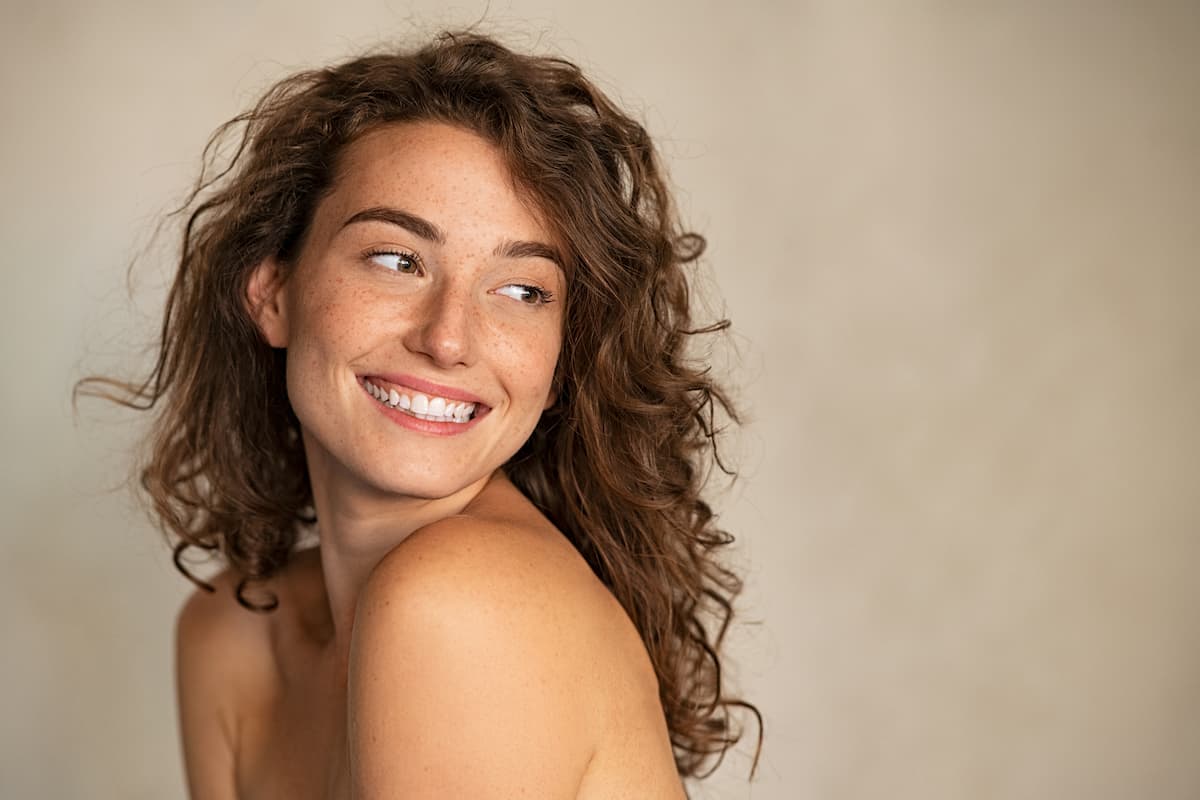
See how to effectively moisturise dry hair.
![Hair oiling: overnight, wet, dry [home remedies].](https://cdn-resources.natu.care/uploads/1/side_view_man_hair_slugging_night_routine_1_95e3d6a24c.jpg)
Everything you need to know to do hair oiling at home.

